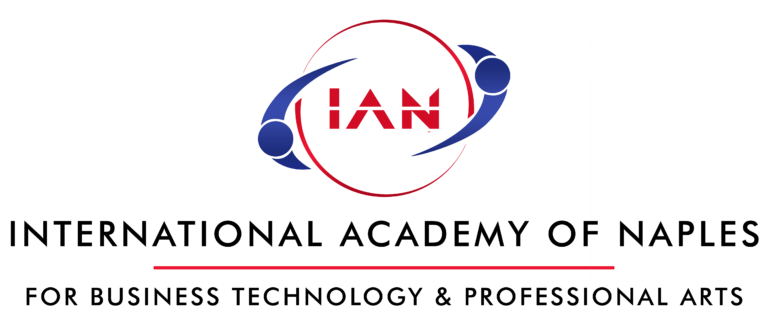Bachelor in Visual Design
COURSE OVERVIEW
Course duration - 3 years
The visual designer performs the graphic representation of advertising messages using many visual communication tools. They are professionals who work in the business services sector and carry out creative tasks aimed at corporate communication.
They translate the advertising ideas into a graphic project with or without the aid of IT supports.
They are able to carry out the design and processing of graphic elements: drawings, illustrations and images. Also carrying out the layout and digital printing.
COURSE CURRICULUM
Year 1 - Certificate Program EQF 4
Drawing and Design in Two and Three Dimensions
This module discusses the steps to creating a dimensional design and methods of dimensioning a drawing, which are parallel, running, chain, and combined. It also highlights the elements of art or design, types of dimensional art and the differences between two dimensional and three dimensional drawings.
Color and Design in Two and Three Dimensions
Students get an introduction to the principle elements of design and the key features that form these elements: colour, line, mass, movement, space, texture, type and value. This unit examines the perception of color, its effective use and the three dimensions of the color experiences: hue, saturation, and brightness.
The Graphic Studio
The Graphic Studio module refers to an illustration & design software used to create graphic designs and vector art. The unit explains the use of the tools, features and canvas in creating projects and the uses and benefits, as well as disadvantages, of the graphic studio.
Graphics and CAD I
This module gives an introduction to Computer-Aided Design (CAD), a software to use computers in the process of designing products, and to design curves and figures in two-dimensional (2D) space; or curves, surfaces, and solids in three-dimensional (3D) space.
Communication Skills I
The unit outlines crucial communication skills such as non-verbal communication, stress management, emotion control, observing and empathizing, and how to harness them.
Creativity and Innovation
This module highlights the importance of these skills, the different aspects of the process of creativity and innovation, and steps towards cultivating these skills both in and out of the workplace.
Year 2 - Diploma Program EQF 5
History
This module presents a case study of the various forms of design that have been presented throughout history and the impact of different factors and phases of history until the present day. It includes the progress and evolution of style and ideas and the connections made between them, to give a better understanding of their influence on modern design.
Visual Design II
Visual Design implements the use of elements to enhance the aesthetic appeal of a site. This module explains the roles of a visual designer, and the differences and similarities between visual designing and graphics designing.
Theory & Design Visual Arts
The fundamentals and principles of visual communication and visual art are discussed in the theories of design and art which this unit examines.
Graphics and CAD II
This indepth study of Computer-aided design (CAD) and it's effect on graphics highlights the theory of Integrated Computer Aided Design; its components, and the utility and application of computer graphics in geometric modeling, design analysis, design optimization. This module develops your understanding about the use of 2D or 3D CAD software to create visualizations in professional graphic design and also discusses the possible advantages and disadvantages of using Computer Aided design.
Communication Skills II
This module looks into the types of communication skills, and the major components of effective communication. It also teaches the importance and effect of communication skills, methods of developing communication skills, and how to identify and utilize the right communication styles.
Year 3 - European Bachelor Programs EQF 6
Web Design
This unit introduces and dissects the broad discipline of web designing. It views the different areas, and skills required, of web design. This module discusses usability, utility, and visual design; and it also focuses on the main principles, heuristics and approaches for effective web design.
Typography and Photography
This module highlights the techniques, terms and types of typography and typographic illusions, and discusses the many styles, rules, uses and effects of typography design. This unit also ventures into photography and its elements, rules, techniques and types.
Design Execution Drawing
This module reviews the meaning, goal and process of design execution, types of design drawings and their individual uses. In this unit, students become familiar with how to create different types of design execution drawings and the elements or components involved such as interior and exterior elevations, interior and exterior 3D renderings, floor plans, site plans, design layout, aesthetic elements, and connection design.
Landscape and Environment Science
The unit looks into the definition, approaches to and fields of landscape and environmental science. It equips students with knowledge about environmental, ecological and landscape related issues.
Sustainable Web and Professional Graphic Design
The sustainability of the graphic design process depends on a wide range of elements, which are taken into consideration in this module like ethics in graphic design, sustainability challenges for graphic design, and traditional and digital graphic design domains. It discusses about sustainable design trends in design industries and how they can be broadly put to use.
INSTRUCTIONAL MODE
Instructional mode: In presence
Level: EQF 4 up to 6
Duration: 3 Years
ECTS: 180
-Year 1 Certificate Program EQF 4 (ECTS 60)
-Year 2 Diploma Program EQF 5 (ECTS 60)
-Year 3 European Bachelor Program EQF 6 (ECTS 60)
Certification: European Bachelor
DOCUMENTS REQUIRED
Passport / ID Card
Copy of high school diploma or equivalent
IELTS 5.0 minimum score certificate or equivalent
Statement of purpose
Apostill
Legalisation
Declaration of value
